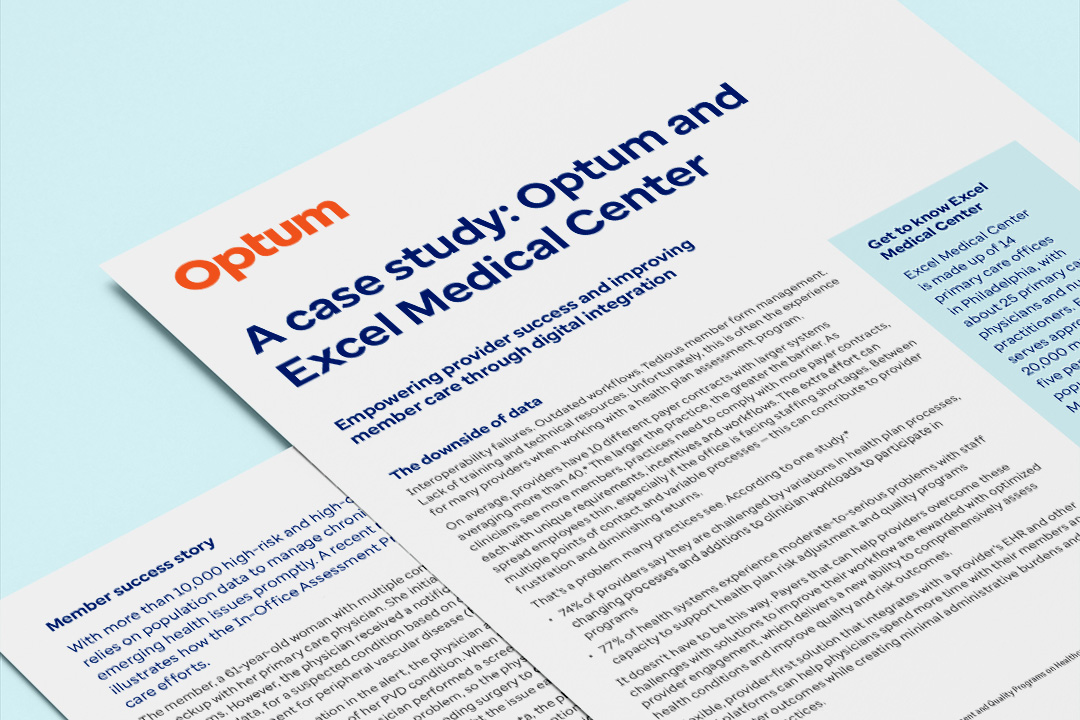The impact of Health Care Advocates
When you are passionate about what you do for a living, it hardly feels like work. That’s been Richard Solomon’s experience as a Health Care Advocate (HCA) for the Optum In-Office Assessment Program.
Richard is one of more than 1,000 Optum HCAs across the U.S. who work directly with medical practices to help them achieve complete and accurate management of chronic conditions for risk adjustment, resulting in exceptional patient care and improved health outcomes. Richard supports about 60 practices throughout the 5 boroughs of New York City.




![Engage Providers to Impact Member Outcomes [Infographic]](/content/dam/optum-dam/images/business/insights/field-team-supports-providers-better-outcomes-1080x720.png)
